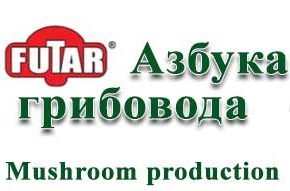Mycelium
For the stable operation of the mushroom growing enterprise, a high quality mycelium is needed. “Futar” Company sells its customers so-called spawn mycelium, which is grown from the stock cultures. The stock cultures, in turn, are produced from the cultures purchased from strains originators, which serves as a guarantee that you will get the exact strain you ordered. Our laboratory produces two kinds of mycelium: mycelium on wooden plugs and grain mycelium. They serve different purposes:
the first type is used for inoculating healthy hardwood logs or stumps in order to harvest the mushrooms in natural conditions,
Grain mycelium (grain spawn) is used to inoculate the plant material or compost (in the case of portobello mushroom) substrates with intensive mushroom growing technology.
The carrier on our grain mycelium is oat seed. Its advantage over other carriers is that the whole grain oats contain a shell in which there are enough nutrients (cellulose and lignin) to ensure active mycelium growth in the very first hours after getting into the substrate. High growth activity allows reducing the incubation time by 3-5 days. This is of particular importance in case of imperfect substrate treatment (for example,hydrothermal treatment). Since the oat seeds are lighter than wheat or barley seeds, one kilogram of mycelium contains more grains. Therefore, there are more mycelial growth points in the block and they are located closer to each other. This ensures rapid growth of hyphae in the substrate, leaving no chance for competitors’ spores, such as trichoderma , aspergillus or mucor.
Carriers having a smaller grain size, such as millet, have even more growth points. But their essential disadvantage is a small nutrient supply in the grain itself, the hyphae will not grow well after processing the nutrients from the grains. Therefore, you can use this medium only if you are sure that your substrate has passed proper pasteurization and is completely balanced in all nutritional elements.
Some mushroom growers think that it is possible to buy cereal mycelium oyster mushrooms in a production laboratory once and then produce mycelium by reinoculating grain at home.
Let’s see if there is any sense in such savings. Taking into account the costs of grain, electricity, disinfection, you can reduce the cost of homemade mycelium by 60 percent, not more without taking into account your own work efforts!
The amount of mycelium per one oyster mushroom block, which we recommend is 3-3.5% of the substrate weight. A mycelium dose of 300-350 g is needed per one ten kilogram block. If you compare the mycelium price of “Futar” brand, it costs as much as 300 g of mushrooms. Self-made mycelium cost is equal to 130-150 grams of mushrooms.
You save an summ equal to the cost of 150-170 g of oyster mushrooms. When using re-spawning approach, the mycelium activity and the yield decreases, sometimes by 4-7% of the block weight. And this is from corresponds to 400 – 700 g of mushrooms. Thus, saving on a mycelium, you will lose twice as much on a yield decrease.
In addition, the contamination risk of molds and bacteria is much higher at home than in a specially equipped laboratory. In case of introducing an infected mycelium into your substrate, you risk losing the whole batch of blocks and not getting yield at all.
We produce mycelium in sterile sealed bags, with two HEPA-filters that do not let spores inside bags. Such package is an important quality indicator.
If you buy mycelium in simple plastic bags sealed with adhesive tape, you can not be sure of sterility, strain purity, and the product quality.
Storage of mycelium.
To preserve the quality and germination activity, mycelium should be stored in a refrigerator compartment, separate from harvested mushrooms, at a temperature of – 1 – +3ºC, for not more than one month. At a temperature of +5 – shelf life should be no more than three weeks.
In case of high mycelium activity, mycelium germination is possible during its storage, while its surface becomes bumpy, forming structures similar to primordia rudiments. The quality is not lost, but it is necessary to use such packages as quickly as possible.
We do not recommend freezing the mycelium, as during defrost, it does not only lose activity, but also a cell membranes rupture occurs, causing cell death of most mycelium.
Our laboratory grows only
highly productive, fast-growing strains.
On a properly prepared substrate and in adherence of all microclimate conditions on incubation and in a growth chamber, such strains can yield up to 20 – 25% of the substrate weight in the first flush. Read here our strains description.
